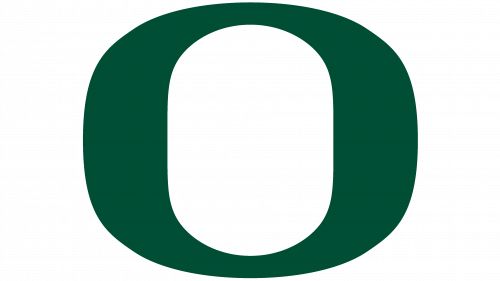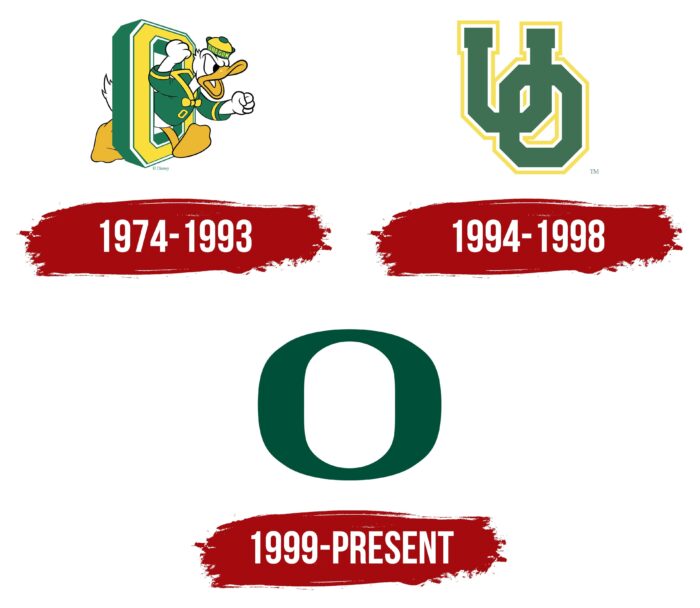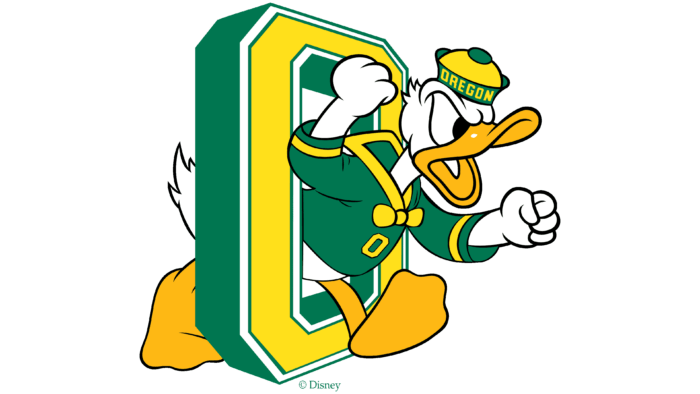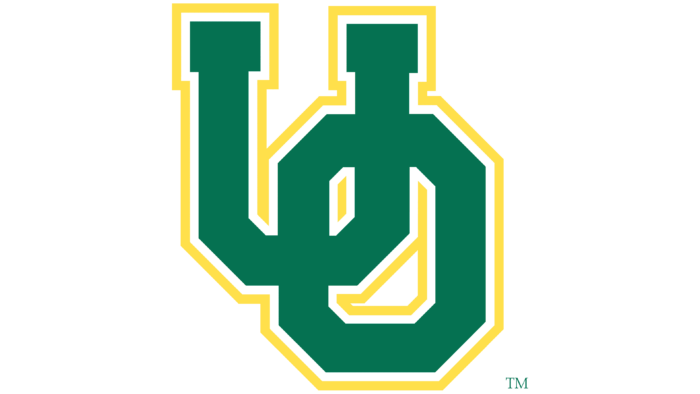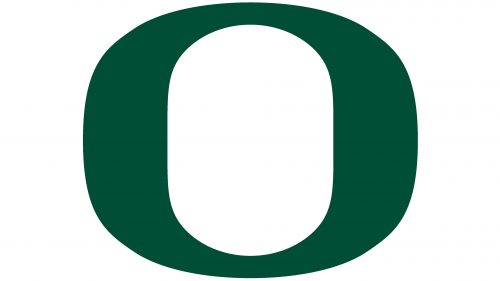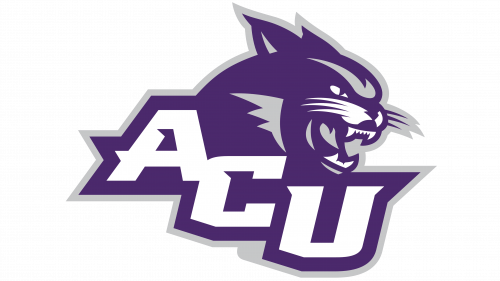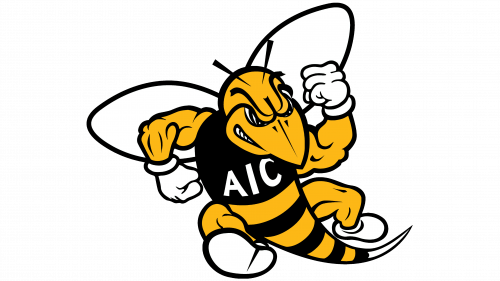The Oregon Ducks logo symbolizes the strength, unity, and traditions of the University of Oregon. It reflects the university’s deep connection to the natural environment of Oregon, a state known for its forests and green landscapes. The emblem also emphasizes the community spirit and sports culture essential to the team’s and fans’ identities.
Oregon Ducks: Brand overview
The University of Oregon was established in 1876, marking the start of the Oregon Ducks’ existence. It was long later that the formal nickname “Ducks” emerged. The university’s sports teams were formerly called “Webfoots,” a moniker associated with early settlers in Oregon. From the 1890s to the 1920s, this term was in use. A sports editor for a local newspaper began referring to the squad as the “Ducks” in his pieces in the 1920s. This moniker gained popularity among followers over time and was eventually approved.
The football program was founded in 1894. During its early decades, the team’s performance was modest but steadily improved. Progress was made when the team made it to the Rose Bowl and won their conference for the first time in 1948. Even though the team didn’t win this match, this accomplishment signaled the start of a new phase for the football program.
While the squad enjoyed some success here and there in the 1950s and 1960s, it was never able to maintain high performance levels. When coach Rich Brooks joined the team in the 1970s, things changed. Under Brooks, the team improved in competition. They made it to a bowl game for the first time in twenty-six years 1989. They participated in the Rose Bowl in 1994 after winning the Pac-10 conference.
When Mike Bellotti was appointed head coach in 1995, something revolutionary happened. Bellotti established a formidable team that frequently competed for conference championships and participated in esteemed bowl games. At that time, the best-ever season-ending second ranking in the country came in 2001.
Chip Kelly became the team’s head coach in 2009. Under Kelly’s leadership, the team developed into one of the nation’s most exciting and productive teams. The team debuted in the national championship game in 2010 and was defeated by Auburn.
In 2011, they defeated Wisconsin to win the Rose Bowl for the first time in ninety-five years, cementing the program’s standing as one of the best in college football. Football fans celebrated another victory in 2012 when they defeated Kansas State in the Fiesta Bowl. After defeating Texas in 2013, the team took home the famous bowl again.
2014 was a landmark season for the program. Under the direction of Heisman Trophy-winning quarterback Marcus Mariota, the team advanced to the College Football Playoff championship game. Despite losing to Ohio State in the championship game, this accomplishment cemented the program’s standing as one of the nation’s top programs.
Mark Helfrich took over as coach in 2015 after Chip Kelly left to join the NFL. The squad performed admirably under Helfrich, even if they could not duplicate their accomplishments from the previous year.
The football program declined in 2016 and 2017, which resulted in Helfrich’s firing and the hiring of Willie Taggart. But Taggart was only employed for one season before Mario Cristobal took over.
The team won titles in 2019 and 2020 and surged to the top of the Pac-12 under Cristobal’s leadership. Additionally, the squad won the Rose Bowl in 2019, a huge accomplishment for the program.
The enterprise was quite successful in other sports. In 2017, the men’s basketball team advanced to the NCAA Final Four for the first time since 1939. In 2018 and 2020, the women’s basketball team won the Pac-12 regular-season championship.
The track and field program won multiple national titles in indoor and outdoor competitions, maintaining its dominance. The new Hayward Field track and field stadium’s opening in 2021 marked a momentous occasion. This state-of-the-art facility reinforced the enterprise’s standing as the “Track and Field Capital” of the US.
2022 started in football with some surprising changes. Mario Cristobal departed as head coach to take over at the University of Miami. His replacement was Dan Lanning, the former defensive coordinator of the Georgia Bulldogs. With this change, the football program entered a new chapter.
The club performed admirably under Lanning’s direction in the 2022 season. With an outstanding 9-3 record at the end of the regular season, the Ducks qualified for the Holiday Bowl.
Under Lanning, the football team continued to improve in 2023. Playing at a high level, the team targeted bowl games and competed for Pac-12 league supremacy.
Oregon’s men’s basketball team regularly participated in the NCAA tournament and had a good record. The women’s basketball team performed well and ranked among the best in the Pac-12.
Oregon still has one of the nation’s greatest track and field programs. After its opening in 2021, the new Hayward Field served as a primary location for major national and international events, solidifying the university’s reputation as the “Track and Field Capital” of the US.
The 2022 World Athletics Championships, held in the US for the first time this year, were held at Hayward Field, a momentous occasion for American sports and the university specifically.
The enterprise was extremely successful in sports other than football. With multiple national championships won, the track and field program is regarded as one of the best in the nation.
Oregon’s basketball teams performed admirably. In 2017, the women’s team won the Pac-12 Conference thrice, and the men’s team advanced to the NCAA Final Four.
The enterprise has a long history of being recognized for its athletic prowess and its creative approach to marketing and uniform design. Alum Phil Knight of Oregon established Nike, and the two companies worked together to create some of the most iconic and stylish college sports jerseys ever.
Oregon Ducks Logo
What is Oregon Ducks?
This is the name of the athletic teams of the University of Oregon based in Eugene, Oregon. The Ducks, who play in the Pac-12 Conference, are recognizable because of their mascot, a duck, and their eye-catching green and yellow colors. Oregon’s athletic programs have become better known nationwide, especially in soccer and track and field. The soccer team is known for its creative, fast-paced offense and the dynamic, eye-catching jersey design that has become a symbol of the program. Through close ties to Oregon resident and Nike co-founder Phil Knight, the athletics program has produced many Olympians and elite athletes.
The university has 18 Pac-12 Conference athletic teams that are NCAA Division I members. They include soccer, track and field, basketball, baseball, tumbling, etc. Overall, they have won 28 NCAA team events and 60 individual events. The initial roster of players was introduced in 1893, and a year later, they had already played their debut game. The first serious victory came to them in 1917. The basketball players won the first NCAA basketball tournament in history. This happened in the 1938-1939 season.
1974 – 1993
The sports logo features a large letter “O” with trimmed corners, making it an octagon. The letter is tilted, revealing only one side, colored green, while the rest is yellow. Thin white borders run along the letter’s outer and inner edges. At the center of the emblem is an anthropomorphic drake wearing a jacket and a brimless cap. The drake is menacingly shaking its fists as if ready to attack an opponent. This image is directly associated with the name of the University of Oregon’s sports department—the “Oregon Ducks.” All elements of the visual mark are colored in the official university colors, yellow and green.
In the 1970s, American sports teams frequently used bright and memorable mascots to give their teams a unique identity and evoke an emotional response from fans. The anthropomorphic drake, chosen as the symbol, embodies courage and readiness to fight. It appears energetic and determined, intended to inspire the team to victory and intimidate opponents.
The green color represents Oregon’s natural environment, reflecting its connection to local traditions and nature. The yellow adds energy and vibrancy to the logo, which is associated with sunlight and optimism. The white borders provide clarity and contrast, highlighting the logo’s elements and making them more prominent.
1994 – 1998
The university administration changed the logo to avoid any direct resemblance between the sports mascot and the cartoon character Donald Duck. As a result, the acronym for the University of Oregon, “OU,” was introduced on the emblem. The letters have clear geometric proportions, making them similar in appearance. The main difference is that “U” has serifs, while “O” does not.
The shape of the letters remained the same as in the previous emblem: the corners are rounded, and the color scheme is green and yellow, with the addition of a white stripe. However, the composition has changed—the primary color is now green, the secondary color (the outline) is yellow, and a light stripe has been added between them. The letters are arranged diagonally and intertwined, creating a sense of dynamism and movement.
Green symbolizes nature and the region’s lush vegetation, while yellow represents the sun and the energy athletes need to achieve victory. The white line between the colors adds clarity and contrast, emphasizing the team’s precision and confidence.
The logo reflected the spirit of the time, and it was important to create a unique and easily recognizable image that would unite the team and its fans. The university aimed for the logo to become a symbol of unity and strength, with its elements—geometric precision, color scheme, and interwoven letters—highlighting the team’s drive for victory and growth.
1999 – today
The logo is a single letter “O.” It is wide, with an oval inner space, visually resembling two large brackets connected. The sports department opted to simplify the color scheme, choosing only green.
The letter “O” in the emblem is designed with simplicity yet a strong presence. It symbolizes continuity and unity—the closed shape of a circle has always been associated with something complete and unbroken. This symbol can convey the team’s cohesion, integrity, and indomitable spirit.
Green is the color of nature, life, and growth. This is significant for a team representing a university. The color symbolizes energy, renewal, and hope for the future. This shade of green is associated with Oregon’s fields and forests, creating a connection to the environment and the region’s traditions.
